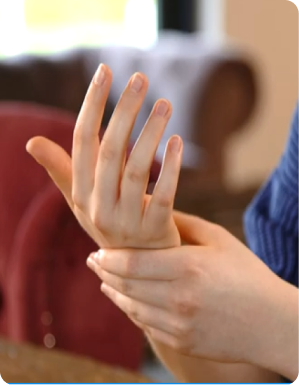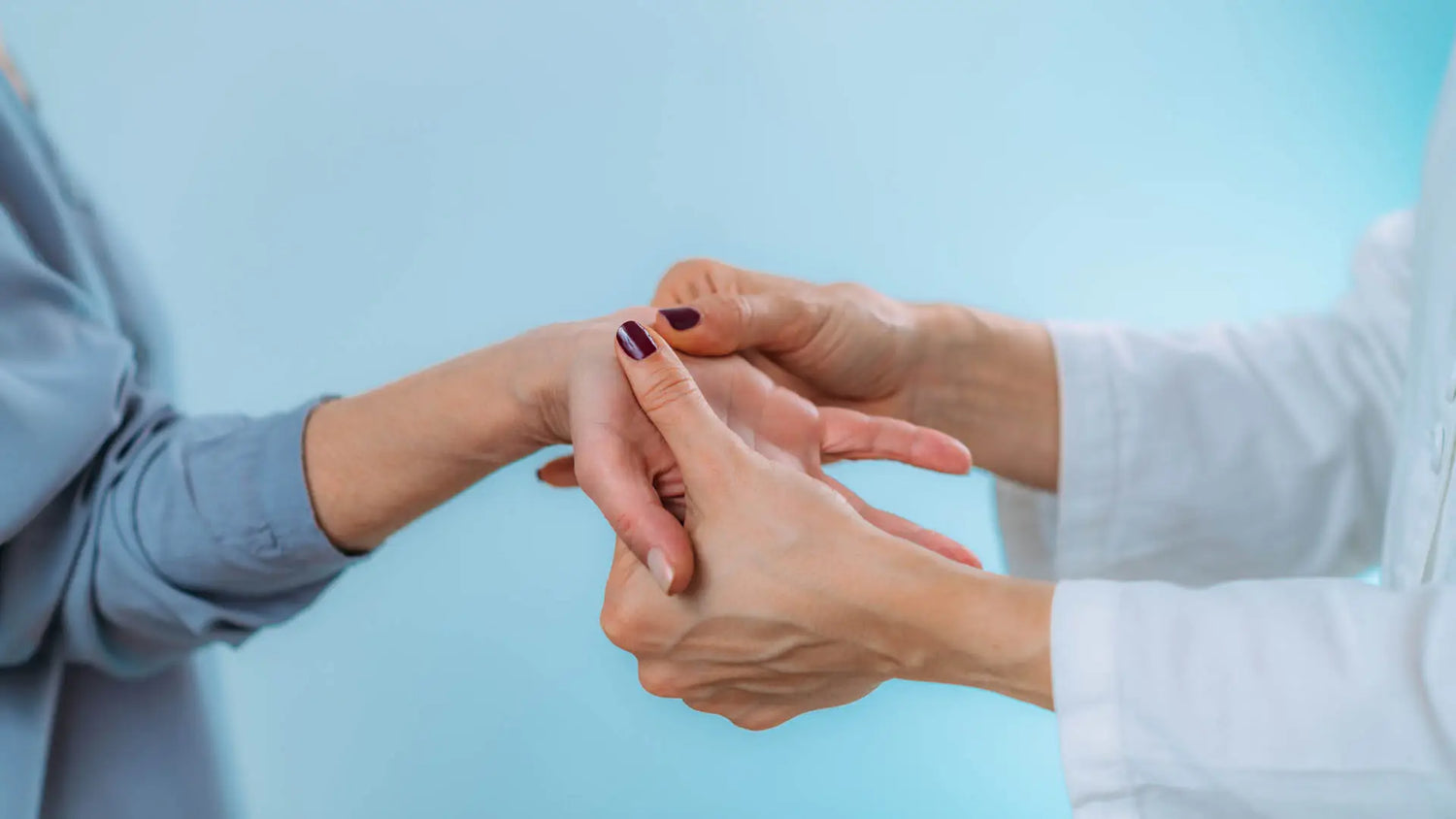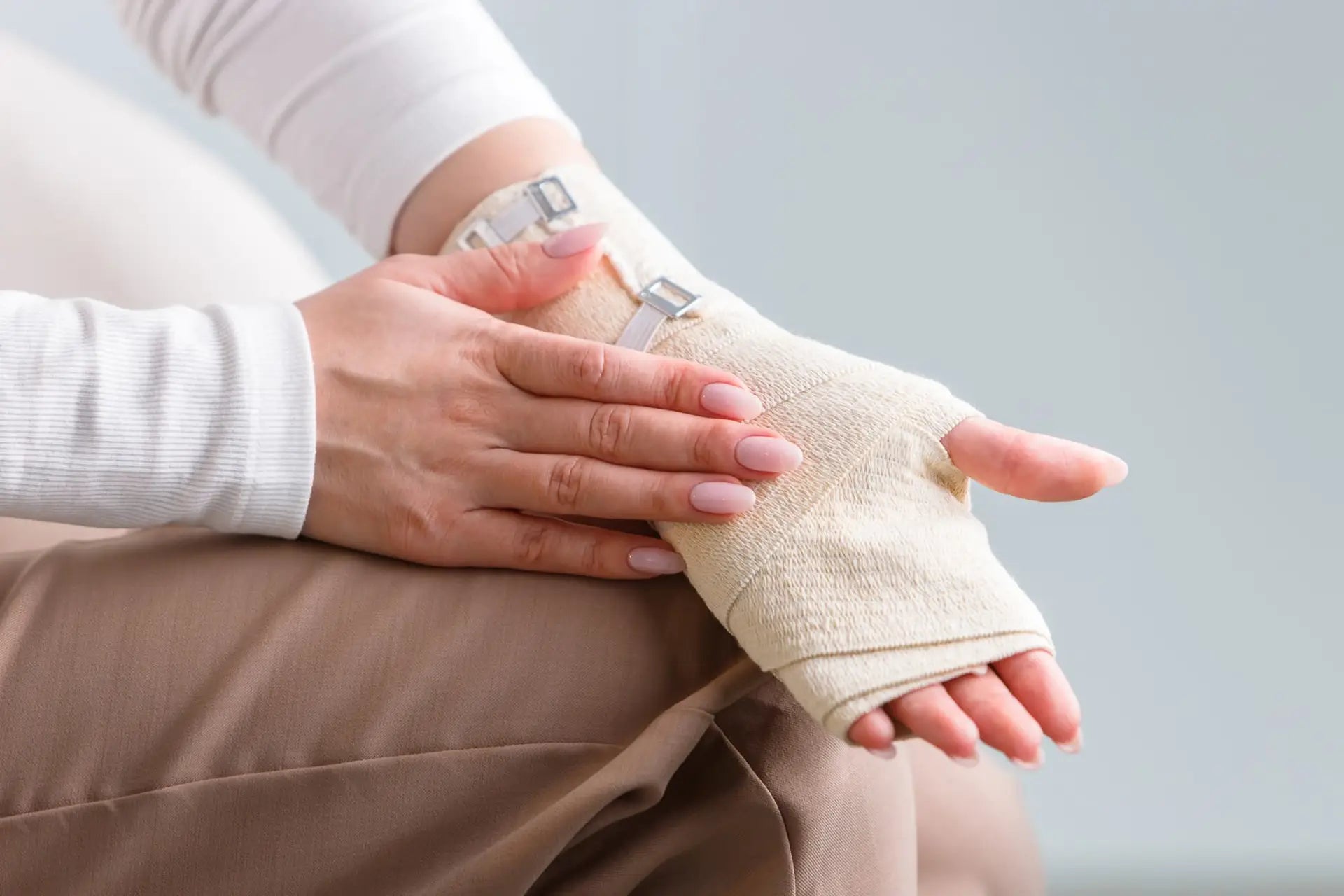Definition of carpal tunnel syndrome and the median nerve
Carpal tunnel syndrome (CTS) refers to a bottleneck syndrome of the median nerve in the area of the carpus.
Epidemiology
Carpal tunnel syndrome is the most common constriction syndrome of the peripheral nerve. It occurs primarily between the ages of 40 and 70 and can often occur on both sides.

Causes
Carpal tunnel syndrome can be triggered by acute (e.g. injuries) or chronically progressive (e.g. metabolic disorders) nerve compression of the median nerve. The triggering factors include
Overuse or repetitive activities: Carpal tunnel syndrome is part of the Cumulative Trauma Disorders (CTDs).
Weight gain:
- Obesity
- pregnancy
- myositis
- Tumors (fibromas, lipomas)
- long-term hemodialysis
Degenerative, rheumatic, hormonal and metabolic diseases:
- Hypothyroidism with myxedema
- acromegaly
- arthritis
- Tendosynovitis
- Diabetes mellitus (with diabetic neuropathy)
- Amyloidosis (e.g. ATTRwt amyloidosis)
- Mucopolysaccharidosis
- traumas
- Fractures in the wrist area (e.g. radius fracture)
- Bleeding
- oedema
- Hand phlegmon
- Wrist arthrosis
In some cases, the disease is idiopathic. A constitutionally determined narrowing of the carpal tunnel can favor the development of the syndrome.
Development & symptoms of KTS
An anatomical bottleneck is a prerequisite for the development of carpal tunnel syndrome, which affects the median nerve below the transverse carpal ligament. The clinical symptoms are caused by an increase in volume or edema of the tunnel.
Anatomy of the median nerve
see: Carpal tunnel diagram

Symptoms
Patients with this syndrome suffer from pain and paraesthesia in the area supplied by the median nerve. Painful tingling paresthesias or needle-like sensations occur, mainly in the middle and ring fingers, later also in the thumb and index finger, often accompanied by pain in the arm.
Initially, these symptoms often occur in connection with mechanical strain on the hand (e.g. cycling, reading, telephoning, knitting, etc.), with the dominant hand often being more severely affected. Typically, pain in the hand and forearm also occurs at night ("brachialgia paraesthetica nocturna").
These symptoms can be alleviated by shaking, rubbing, finger movements, arm or hand positions and cold applications.
As the disease progresses, sensory disturbances occur with increasing numbness, including impairment of the sense of touch (the fingers become numb, fine work is no longer possible).
In advanced stages, chronic nerve compression leads to weakness of the muscles in the ball of the thumb (lateral thenar muscles) and a reduction in grip strength (with difficulty spreading and rotating the thumb).
Occasionally, vegetative disorders such as skin and nail changes also occur.

Concomitant disease
In around 16 to 43 % of cases, carpal tunnel syndrome is associated with tendovaginitis stenosans ("snapping finger") or its preliminary stages, which are characterized by morning finger stiffness or painful and incomplete fist formation.
Diagnosis
A detailed medical history and clinical examination lead to a diagnosis in most cases.
Inspection and palpation to assess muscle atrophy
Checking the surface sensitivity
Motor tests:
- Restriction of thumb abduction and opposition
- Bottle test to assess the abductor pollicis brevis muscle
Provocation tests:
- Hoffmann-Tinel sign
- Phalen test
- Carpal compression test (Durkan test)
Online test: Directly on Curpal.de
Further diagnostics are carried out using electrophysiological examinations. Sensory and motor neurography are effective methods for detecting chronic CTS. One conspicuous finding is a reduced nerve conduction velocity (NLG) of the median nerve in the carpal tunnel, usually due to demyelination. Advanced axonal damage can lead to reduced reaction amplitudes.
Alternatively, the diagnosis can be confirmed by sonography, whereby the cross-sectional area of the median nerve above the wrist is measured in a volar transverse section. In the case of carpal tunnel syndrome, it is enlarged due to compression of the nerve.
Differential diagnoses
Nerve root irritation due to degenerative changes in the cervical spine (cervical radiculopathy of C6 and C7)
Polyneuropathy
Lesions or compression of the median nerve (pronator teres syndrome, thoracic outlet syndrome, scalene syndrome)
Spinal diseases
Non-neurogenic or other diseases (forearm compartment syndrome, polymyalgia, Raynaud's syndrome, Lyme disease, etc.)
Muscular hypertrophy of the pronator teres or pronator quadratus muscle, e.g. in athletes or manual workers
Healing
Another treatment alternative is the use of Curpal®.
This patented medical device offers a non-surgical solution for carpal tunnel syndrome. By applying mechanical pressure to the back of the hand, Curpal® stretches the carpal ligament on the inside of the hand, which runs transversely from the ball of the hand to the edge of the hand.
This widens the carpal tunnel and gives the nerve more space. The pressure that led to pain and discomfort is relieved. The use of curpal® is an effective method of preventing the progression of carpal tunnel syndrome.
Wearing special wrist supports can also help to reduce the pressure on the median nerve in the carpal tunnel.
Curpal® offers an innovative and gentle alternative to conventional treatment for carpal tunnel syndrome. It enables patients to alleviate their symptoms and improve their quality of life without having to undergo surgery. More information about Curpal® and its application can be found on the official website: https://www.curpal.de/.
Sources
1st German Medical Journal - https://www.aerzteblatt.de/archiv/188575/Karpaltunnelsyndrom-Manuelle-Therapie-ist-ueber-ein-Jahr-so-wirksam-wie-OP
2. focus.online - https://unternehmen.focus.de/karpaltunnelsyndrom-symptome.html







Leave a comment
This site is protected by hCaptcha and the hCaptcha Privacy Policy and Terms of Service apply.